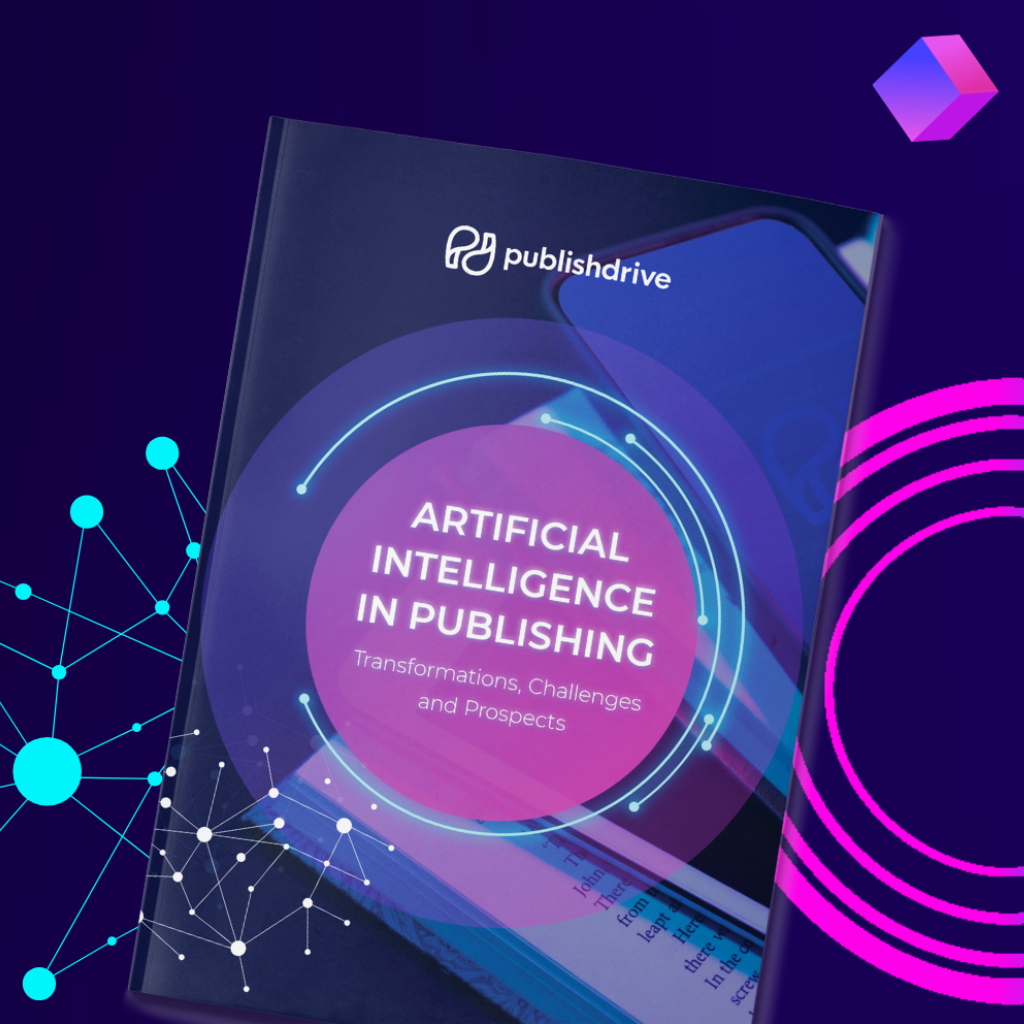Guide to Building Strong Author-Publisher Relationships

The relationship between authors and publishers is a cornerstone of success.
How can publishers build a strong partnership with their authors? By focusing on communication, understanding, and shared goals.
Let’s explore these in detail.
Key takeaways:
- Strong author-publisher relationships thrive on transparent communication and aligned expectations from the outset.
- Success in publishing is measured by deep reader engagement and the quality of connections rather than the sheer volume of titles.
This write-up goes over:
A. Where Are Partnerships Failing?
Despite the best of intentions, many partnerships fall short. These are the main reasons:
1. Communication divide
Authors feel excluded from critical decisions about their work's progress. At the same time, publishers grapple with unmet expectations or delays from their authors or within the industry.
Expectations should be clearly outlined from the start to maintain a collaborative environment. This alignment includes everything from marketing support to editorial involvement and expected sales.
2. Lack of support
Authors frequently voice concerns over insufficient marketing and promotional support post-launch, feeling their work doesn't receive the attention it deserves.
The traditional model tends to grant publishers considerable control over the creative process, leading to conflicts, particularly when authors feel their creative vision is compromised.
3. Publishers not addressing industry changes
Rapid changes in the publishing industry, driven by digital innovation and shifting consumer behaviors, require authors and publishers to remain adaptable and forward-thinking.
Authors are now more aware of the possibilities for direct engagement with their readership, creative autonomy, and potentially more lucrative financial returns through alternative publishing routes. This awareness raises the bar for traditional publishers to offer value that justifies their role, not only in distribution and prestige but also in providing strategic support, using new technologies, and offering fair, transparent financial agreements.
The push towards a more inclusive and diverse publishing ecosystem has highlighted the need for publishers to acknowledge and actively embrace a broader spectrum of voices and stories. This requires a commitment to understanding and supporting the unique perspectives and challenges faced by authors from underrepresented communities, ensuring that the partnership is a business arrangement and a collaborative effort to enrich the literary landscape.
The integration of Artificial Intelligence [AI] into the publishing industry changed the way authors and publishers create content, market their works, and engage with readers.
A recent survey by PublishDrive, involving more than 250 industry professionals, revealed a significant trend towards AI-driven content creation, with tools being used to generate ideas and assist in the writing process.
AI is increasingly employed in marketing for better engagement and efficiency, shifting towards more personalized and interactive reader experiences.
Our survey also revealed ethical concerns, emphasizing the necessity for industry-wide standards in the responsible use of AI.
Dive deeper into how AI is shaping the future of publishing by downloading our whitepaper on AI in publishing ⬇️

4. Financial Differences
Financial discrepancies worsen these relationships. While publishers try to take a bigger slice of the royalties pie, authors seek more favorable terms or greater transparency in these financial arrangements.
These financial concerns can lead to partnership stagnation, especially when coupled with other divergences in long-term strategic goals.
B. Bloom Books: A Model Case
Jane Friedman has recently talked about Bloom Books, one of the fastest-growing new imprints.
Bloom Books proposes a new way to partner with authors that enhances their entrepreneurial skills.
In a recent analysis by Publishers Weekly on 2023 print bestsellers, Sourcebooks emerged as a dominant force in the trade paperback category, with 29 titles accounting for over 20% of all trade paperback bestseller positions. A significant contributor to this success is Bloom Books, an imprint of Sourcebooks responsible for 23 of these bestselling titles.
Launched in 2021 after E.L. James transferred her entire backlist from Penguin Random House to Sourcebooks, Bloom Books specializes in romance and adult fiction. It notably targets entrepreneurial women authors, offering them an unconventional partnership model emphasizing greater control over the creative and marketing processes.
Three years into its inception, Sourcebooks' approach of fostering equal partnerships with indie authors and committing to substantial marketing and promotion efforts has proven successful.
This rare model among major New York publishing houses highlights the potential for success when publishers collaborate closely with authors, treating them as true partners in the publishing process.
C. Possible Way Forward
Based on author-centric, reader-centric, and fan-centric coordinates, the Bloom Books model may offer a blueprint for authors who want to establish successful partnerships with publishers.
It ensures that the creative and business aspects of publishing align with the interests of authors, readers, and fans alike, fostering a mutually beneficial ecosystem.
Here are some strategies authors can adopt to cultivate such partnerships:
Writer-focused collaboration
1. Seek publishers that offer creative control
Look for publishers that give authors control in the creative process, including editorial decisions, cover design, and marketing strategies. This ensures the preservation and promotion of the author’s vision.
2. Advocate for transparent communication
Establish the expectation for open lines of communication regarding all aspects of the publishing process, from timelines to financial terms. Regular updates and discussions should be standard in the partnership.
3. Prioritize contract clarity
Ensure contracts are clear on rights, royalties, marketing commitments, and exit clauses. Consider legal advice to navigate terms and advocate for conditions that respect your long-term career goals and creative autonomy.
Reader-focused strategy
1. Engage in direct reader outreach
Collaborate with publishers that support or enhance direct engagement with readers through social media, email newsletters, and personal appearances. This builds a loyal readership and maintains awareness of reader interests and feedback.
2. Ensure accessibility
Work with publishers that make your work accessible to a wide audience, including considerations for pricing strategies, formats (ebooks, audiobooks), and distribution channels.
Audience-focused interaction
1. Use community building
Partner with publishers who understand the importance of building and nurturing a fan community. This can include exclusive content, insider access, and interactive platforms where fans can engage with you and your work.
2. Involve fans in the publishing journey
Encourage publishers to involve fans in certain aspects of the publishing process, such as cover voting, title suggestions, or early reader programs. This fosters a deeper connection and sense of ownership within your fanbase.
Cross-value strategies
1. Alignment of values and goals
Choose publishers whose values align with your own, especially regarding the importance of prioritizing the needs and interests of authors, readers, and fans.
2. Long-term partnership vision
Seek publishers interested in building long-term relationships rather than focusing solely on short-term gains. This approach ensures ongoing support and investment in your career as an author.
3. Innovative marketing and promotion
Work together on marketing and promotional efforts beyond traditional methods, tapping into digital marketing, social media, and community events to reach and engage readers and fans more effectively.
D. Self-Publishing: Harnessing Creative Freedom
Self-publishing blends creative freedom with direct market access and has grown by an incredible 254% in the past five years.
Author empowerment
Self-publishing authors hold the reins to their creative output. With platforms like PublishDrive, they maintain complete control over every aspect of the publishing process. This includes the liberty to make all decisions regarding writing, editing, cover design, and formatting, ensuring that the final product remains true to the original vision.
The utilization of transparent reporting tools provided by these platforms empowers authors to clearly understand their financial outcomes and market trends.
Direct audience engagement
The direct connection with the audience forms the cornerstone of a successful self-publishing venture. Authors can cultivate a personal relationship with their readers through various channels. Social media platforms, personal blogs, and email newsletters are vital tools for building a loyal readership.
These platforms not only facilitate direct communication and feedback but also allow authors to involve their audience in the creative process. This direct line of interaction builds a dedicated community around the author’s work.
Data-driven decisions
Self-publishing authors access real-time sales data, which empowers them to make informed decisions regarding their titles. By analyzing trends, such as which books perform well during certain seasons or respond to specific marketing efforts, authors can strategically plan promotions or updates to older titles to maximize their longevity and profitability.
This data-driven approach allows them to continually refine their strategies and effectively respond to reader demand, ensuring their backlist remains vibrant and productive in a competitive market.
Rethinking Success
The philosophy of self-publishing, much like the ethos at Bloom Books, transcends traditional metrics of success that focus merely on volume. It's not about the number of titles released but the depth of connection and impact those titles have on readers.
Platforms like PublishDrive enable authors to thrive as autonomous creators by treating them as integral partners and emphasizing quality over quantity.
The focus shifts to enriching the reading experience and expanding the reach to include even those who traditionally might not be avid readers.